9 Mix-ins
In this chapter, you will learn about the fascinating world of sourdough mix-ins. Discover how these additions can elevate your bread, enhancing flavor, adding vibrant colors, and creating delightful textures that make each loaf a culinary masterpiece.
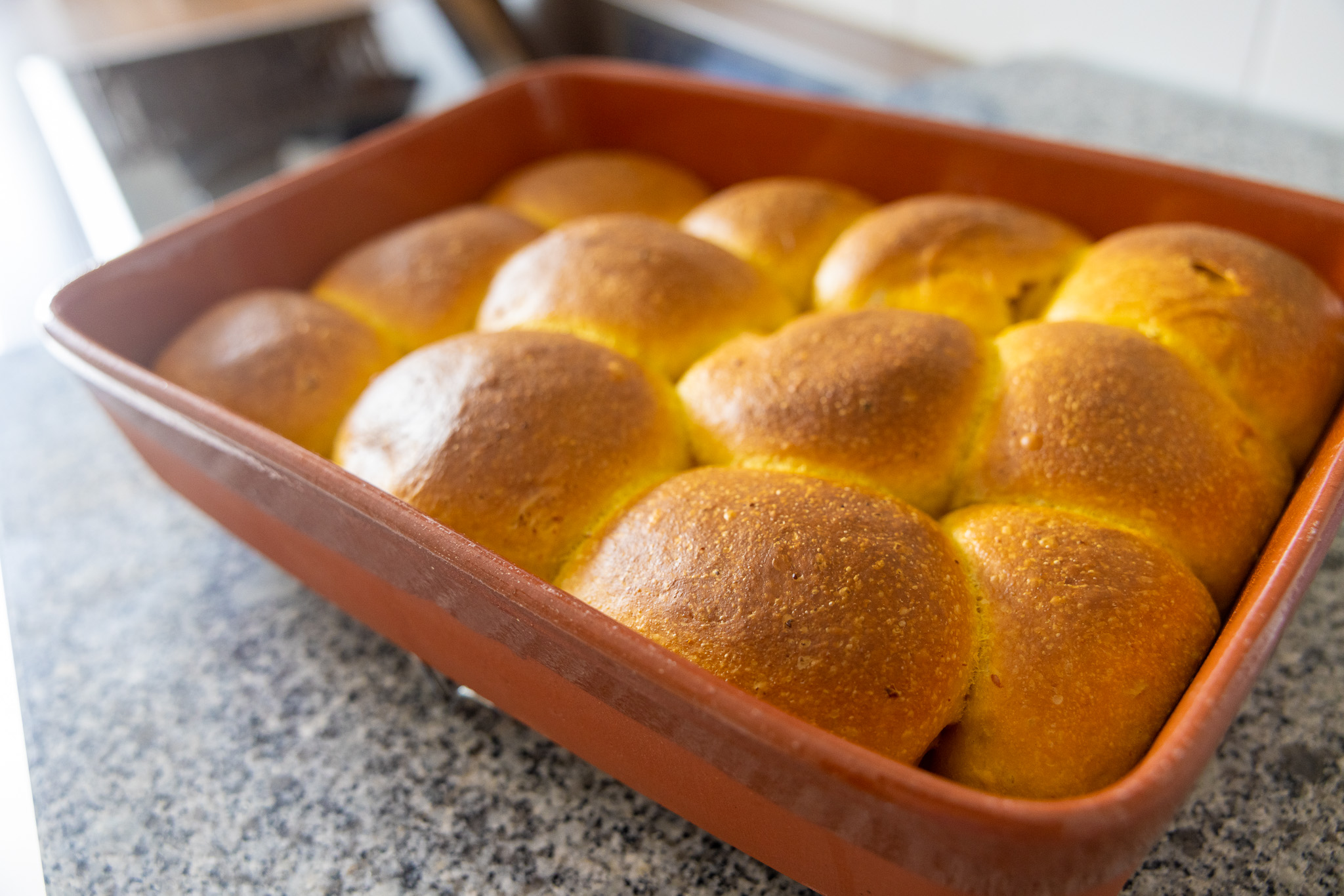
A loaf of wheat sourdough has a very pure aesthetic. Good craftsmanship and precision transform the ingredients into simple, but delicious food. With mix-ins, the basic recipe can become the starting point for a whole world of modifications to try and combine. Think of the loaf of bread as a blank canvas to express yourself.
9.1 Categories🔗
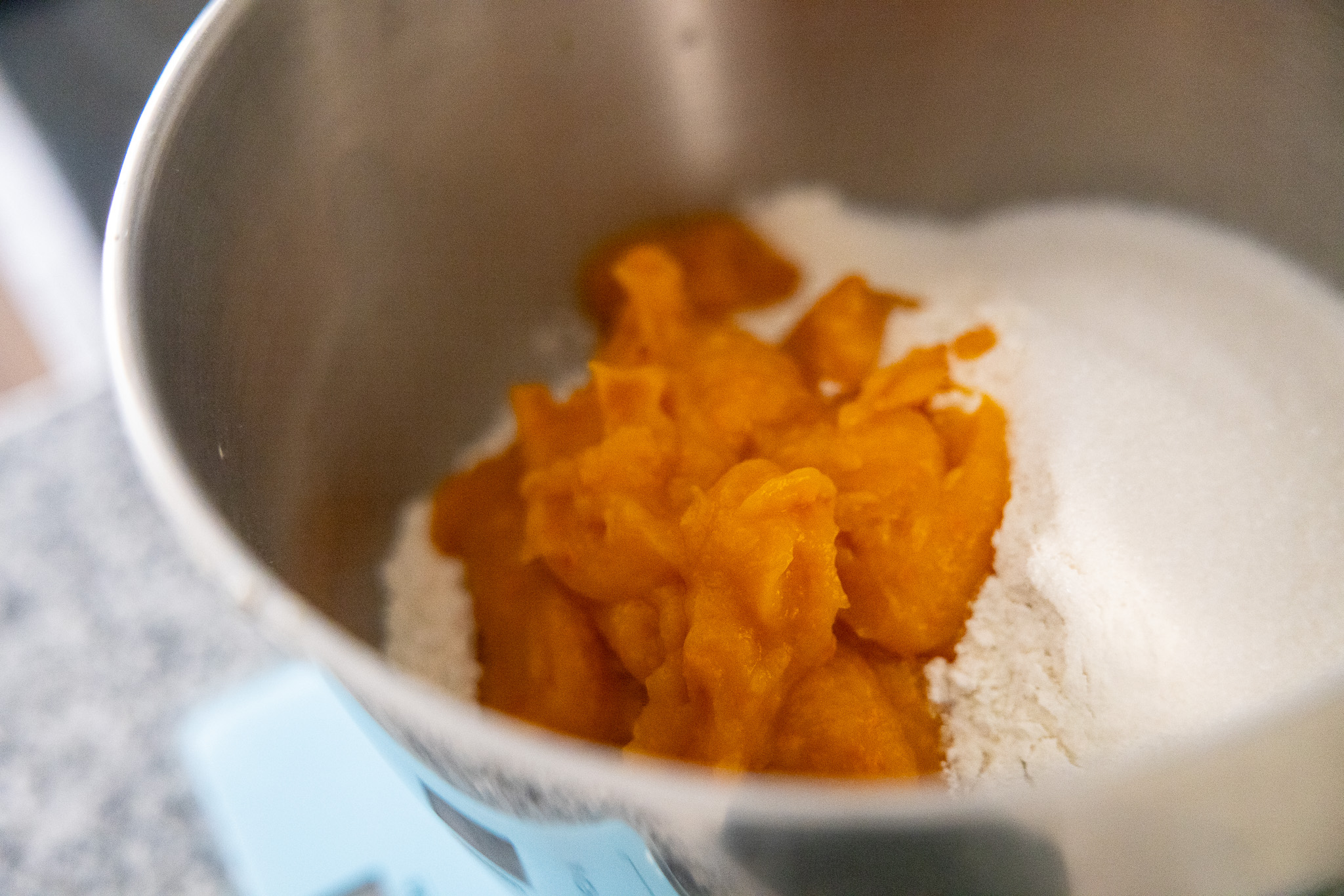
One approach to categorizing the mixins is to look at their respective shape. However, the transition between these categories is somewhat fuzzy:
- Liquids: Integrate homogeneously into the dough, may replace some of or all of the water. Examples: Milk, butter, oil, spinach juice, tomato juice, eggs
- Powders: Integrate homogeneously into the dough, may replace some of the flour. Examples: Milk powder, semolina, cocoa, spices
- Small bits: Individually visible in the final loaf, small enough to distribute somewhat evenly throughout the dough. Examples: Seeds (wheat berries, rye berries, poppy seeds, sesame, pumpkin seeds, flax seeds), whole spices (coriander)
- Chunks: Larger pieces that will only be present in the occasional bite when eating a slice of your bread. Examples: dried tomatoes, chunks of cheese, chunks of chocolate
Another categorization approach looks at the changes to the bread:
- Flavor: Significantly changes the taste of the bread. Examples: rye flour, corn flour, spices, sugar.
- Color: Significantly changes the look of the bread. Examples: cocoa, squid ink, beetroot juice, tomato juice.
- Texture: Significantly changes the feeling in the mouth when eaten. Examples: Cheese (gummy), seeds (crunchy), olives (squishy chunks).
Many of the above-listed mix-ins can’t be pinpointed to a single category. They change multiple aspects of the final bread at the same time.
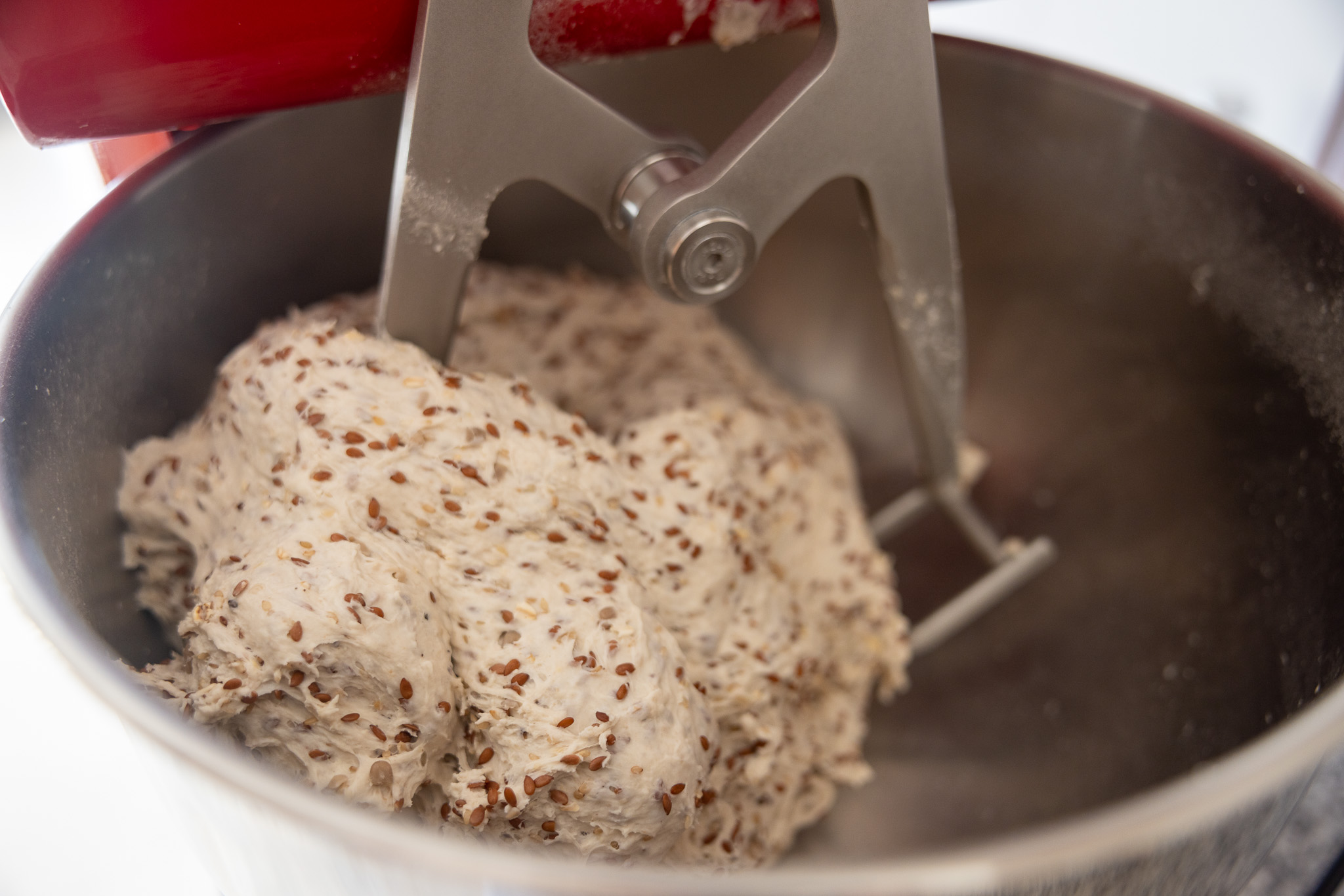
Mix-ins affect the structure of the dough. One aspect is the impact on hydration. Some mix-ins absorb a lot of water when added to the dough, so you have to increase the amount of water to achieve the same dough consistency. The other impact is on the gluten network. Bits and chunks disrupt the gluten network and may reduce oven spring during baking. All of this depends on the amount of mix-ins used. A good rule of thumb is to add 10 % to 20 % of the amount of flour in most mix-ins, reduced to around 1 % to 5 % of the amount of flour for spices.
An important factor is also the mix-in’s behavior during baking. Particularly chunks may bake differently than dough, and either melt (cheese) leaving holes inside, or char when peeking through the crust (e.g. vegetables). These problems can be mitigated to some degree with the right preparation (e.g. chopping into smaller pieces, soaking dry ingredients in water or oil first, or squeezing out excess moisture).
9.2 Examples🔗
The following is a list of common mix-ins and their peculiarities. They can be combined depending on your preference.
9.2.1 Flours🔗
These are powders. Usually, you want to just replace some fraction of the regular bread flour. Different flours change the taste of the bread and usually moderately affect the color.
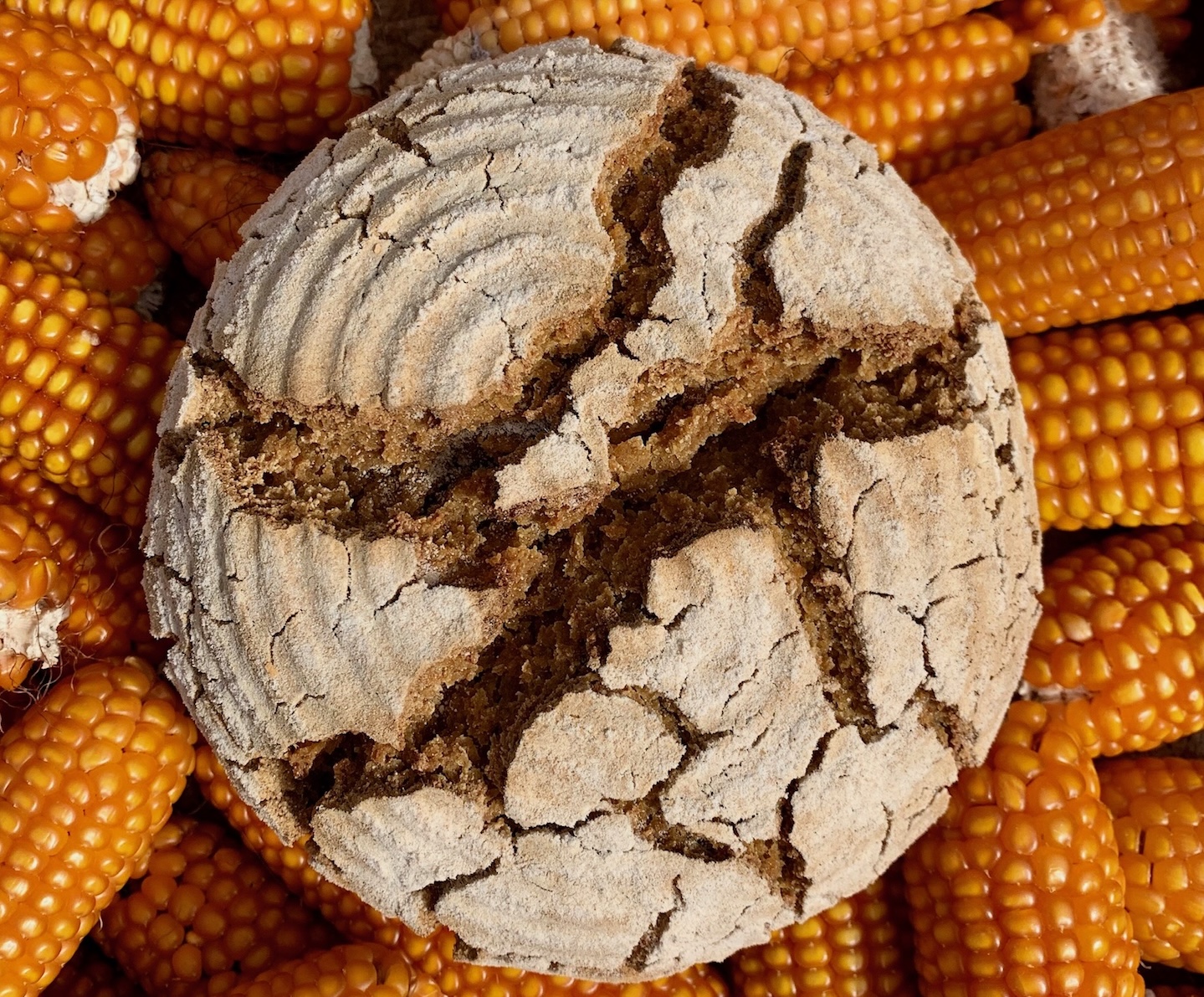
- Whole wheat flour (substitute any amount, makes the bread taste more complex, nutty)
- Rye flour (very hearty, nutty, malty taste)
- Enzymatic malt (malty taste, improves enzymatic activity). The malt is a great addition when making quicker yeast-based doughs.
- Semolina (supports Mediterranean flavors)
- Cocoa (replace 10 % of the flour for a black loaf, goes great with sweet toppings)
- Other non-wheat flours such as: Chickpea, corn, hemp, potato…
9.2.2 Liquids🔗
Instead of using water, you can substitute it with a different liquid, affecting taste and texture.
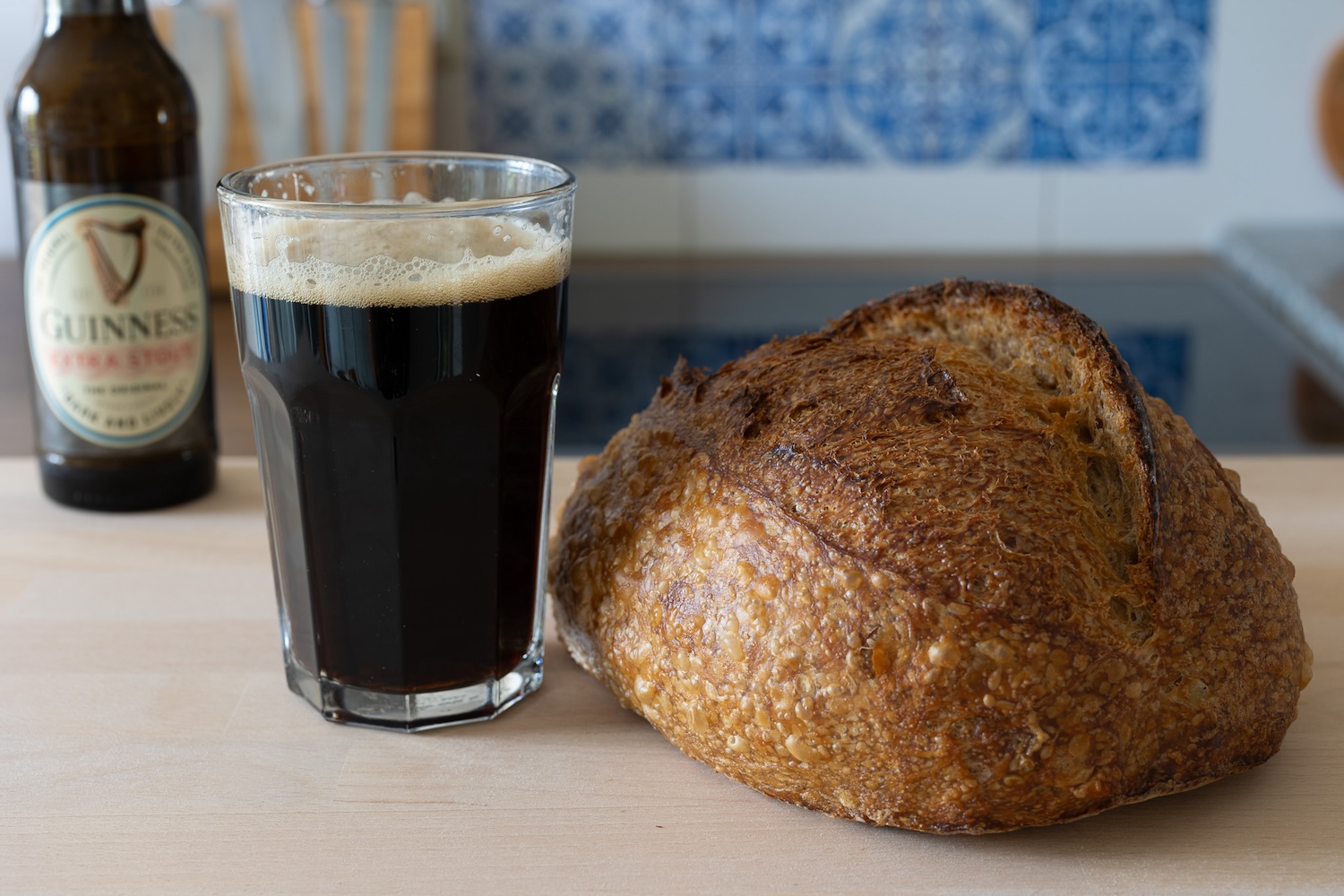
- Beer
- Butter
- Buttermilk
- Cereal milk (the leftover milk from eating cereals)
- Coffee
- Eggs
- Fruit/vegetable juices (also see Section 9.2.3)
- Milk (for sweet, soft breads)
- Milk alternatives such as: Almond, oat, soy…
- Mashed potatoes
- Mashed sweet potatoes. Bolo do caco is a typical bread from Madeira, made from 50 % wheat flour and 50 % mashed potatoes.
- Olive oil (Mediterranean)
- Other mashed vegetables such as: Beets, pumpkin…
9.2.3 Colors🔗
Some mix-ins will change the color and flavor of your bread. Common colorings include:
- Activated charcoal powder (black)
- Beetroot juice (red)
- Blueberry juice (blue)
- Blue butterfly pea flower powder (blue)
- Carrot juice (orange)
- Pear juice (pink)
- Spinach juice (green)
- Squid ink (black)
- Strawberry juice (red)
- Tomato juice (red)
9.2.4 Seeds and nuts🔗
These are small bits, with some almost crossing into the chunk category. Some seeds benefit from being boiled for about 10 minutes before adding them to the dough.
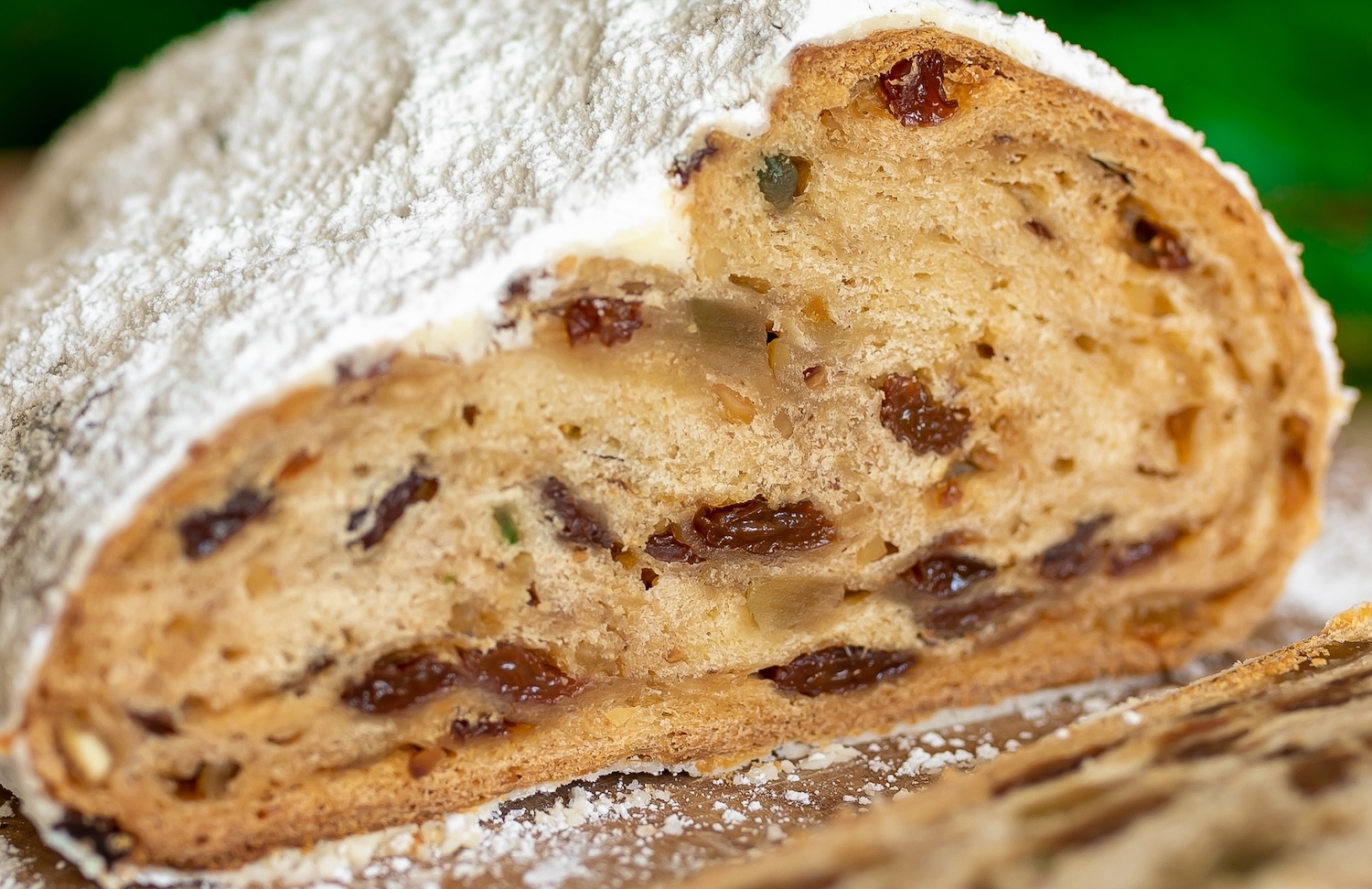
- Cacao nibs
- Chia seed
- Chopped or whole nuts such as: Almonds, hazelnuts and walnuts
- Flaxseeds
- Hemp seed
- Poppy seed
- Pumpkin seed
- Sesame
- Sunflower seed
- Whole rye berries (boil 10 minutes)
- Whole wheat berries (boil 10 minutes)
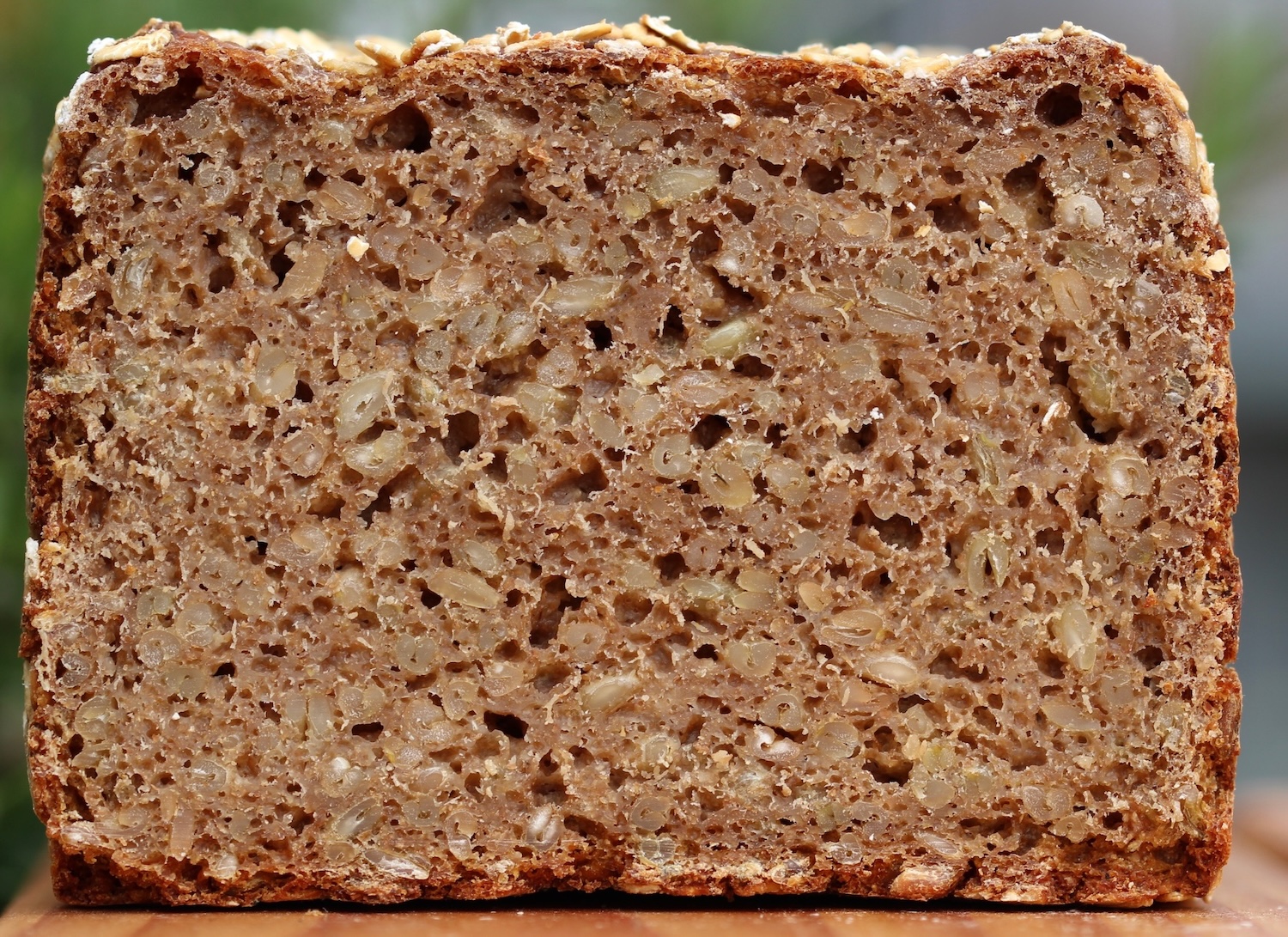
9.2.5 Spices and flavor mix-ins🔗
These are mostly powders or small bits.
- Blueberry skins (press through a sieve to remove juice), raw blueberries
- Browned onions
- Candied fruits such as: Lemon, orange, pineapple…
- Cinnamon
- Grated hard cheese such as: Gruyère, parmesan…
- Mediterranean herbs such as: Marjoram, oregano, rosemary, thyme…
- Miso
- Molasses
- Sugar
- Spices such as: Anise, fennel, cinnamon, coriander, cumin…
- Zests such as: Lime, Lemon, orange…
9.2.6 Highlights🔗
Mostly chunks, that add a big contrast and flavorful highlight to the basic bread. Usually, you want to use only one (or a maximum of two) of these. The suggestions can often be complemented by some flavor or flour mix-in.
- Chocolate chunks or drops
- Chunks of black garlic
- Chunks of cheese such as: Cheddar, feta…
- Cornflakes
- Dried fruits such as: Cranberries, dates, raisins…
- Olives
- Pickled pepperoni
- Sun-dried tomatoes (squeeze out the oil if using pickled ones, or soak dried ones in water)
9.2.7 Combinations🔗
A few combinations where multiple mix-ins complement each other:
- Butter and milk. Then add cinnamon and brown sugar before shaping
- Cheddar and pepperoni
- Cheddar and jalapeño
- Cocoa, cacao nibs, whole hazelnuts
- Cranberry and walnuts
- Semolina, Mediterranean herbs, olives, sun-dried tomatoes
- Tomato juice instead of water with 20 % rye flour
9.3 Techniques🔗
Adding mix-ins to the dough is just the simplest approach. Add the mix-ins directly when you knead the dough. After the first kneading wait for 30 minutes to see if the dough has enough or too much water. In the case of whole-soaked berries (e.g. rye or wheat) chances are that the berries will release some water and make the dough wetter. In this case, you will want to add a bit more flour to the dough to compensate for the high hydration.
9.3.1 What is the best stage to incorporate inclusions (seeds) into the dough?🔗
You can include seeds directly at the start when mixing the dough. If you use whole seeds such as wheat or rye kernels, soak them in water overnight and then rinse them before adding them to the dough. This makes sure that they are not crunchy and are soft enough when eating the bread. If you forgot to soak them you can cook the seeds for 10 minutes in hot water. Rinse them with cold water before adding them to your dough.
If you want to sweeten the dough, your best option is to add sugar during the shaping stage. Sugar added too early in the process typically gets fermented until none of it remains. Adjust your shaping technique a little bit and spread your sugar mixture over a flattened-out dough. You can then roll the dough together, incorporating layers of sugar.
9.3.2 Adding before shaping🔗
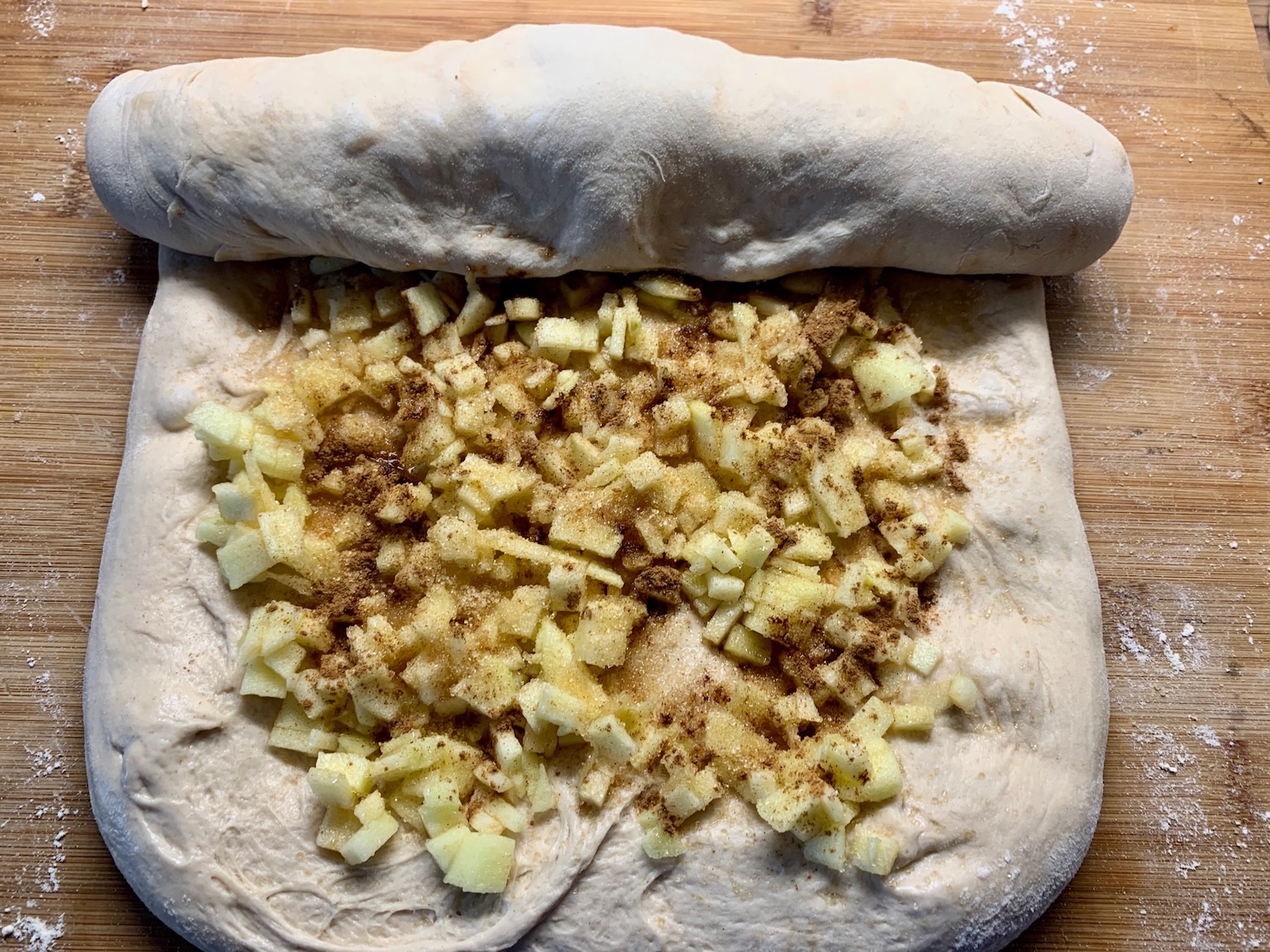
Another approach is to lay the dough out flat after the bulk fermentation. Then using a spatula spread your ingredient over the flat dough. Continue with your regular shaping and/or roll up the dough. When creating a roll you can use a sharp knife to cut the dough, dental floss works great too. Afterward, place the tiny swirls in a container to let them proof and become fluffier. This is an excellent way to add sweet mix-ins as the microbes will not ferment them. When adding sugar to the initial dough it will be fermented and the resulting dough will not taste sweet (depending on the fermentation duration). This approach is excellent for garlic/cheese rolls, garlic/herb rolls, and cinnamon rolls
9.3.3 Covering the surface🔗

This works best for either powders or small bits. After shaping wrap your coverings on the dough’s surface. This works great too when covering your banneton or loaf pan with seeds or oats. When using a loaf pan or banneton these coverings also help to make the container stick less.
Another approach commonly used with buns is to wet the surface or dump the dough in water. Afterward, dip the wet piece of dough into your bowl of mix-ins. This does not work for all mix-ins, as some can’t handle the high temperatures during baking and char. Most commonly done with seeds (e.g. sesame, oats, flax-seed).
9.3.4 Swirled colors🔗
Mix-ins that change the color of the dough bring the opportunity for even more creativity by merging the dough before shaping.
Proceed and separate your base dough before adding a colorful ingredient. Bulk ferment the dough in separate containers. Then Combine the two (or more) differently colored doughs by laminating and stacking the colored sheets of dough before the last folding, just before shaping. This way the colored layers won’t mix and the resulting dough will have differently colored and tasting layers.1
1I once made an experimental dough by merging a wheat, rye, spelt and einkorn dough into a single dough. The resulting dough was layered featuring different colors, textures, and flavors.
